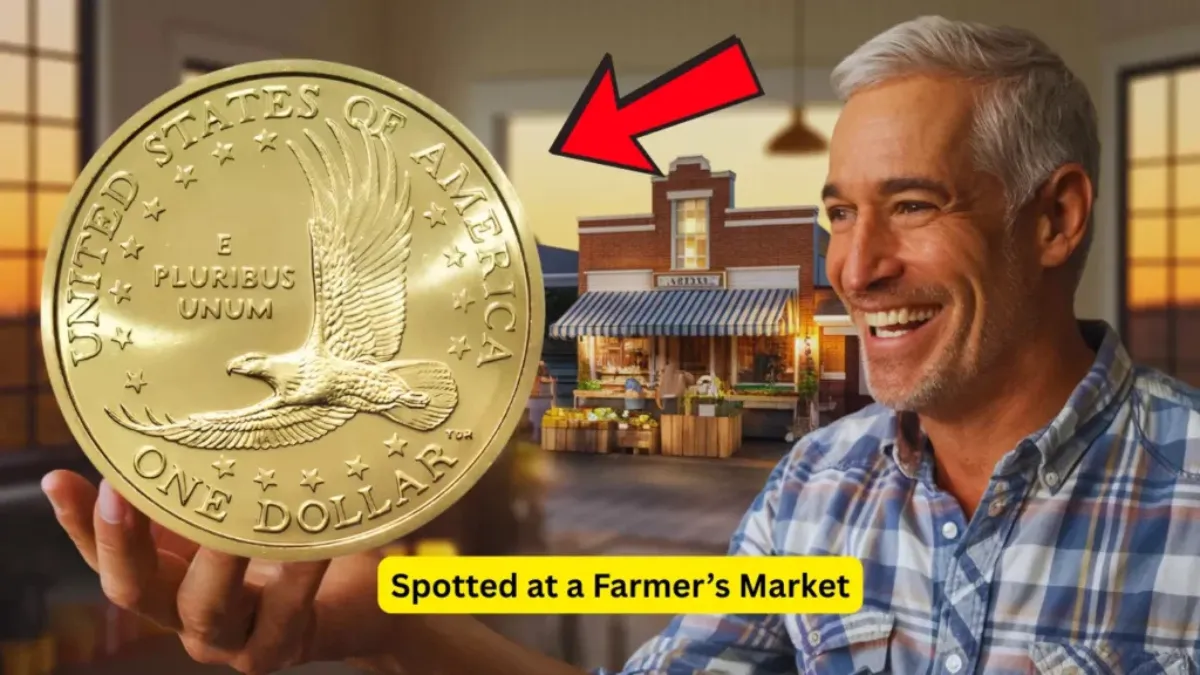A rare and extremely valuable Sacagawea “Cheerios” Dollar — with an estimated worth of up to $1.6 million — was reportedly discovered at a small-town farmer’s market in Indiana. What seemed like a common golden dollar coin turned out to be one of the most coveted and rare coins in recent U.S. mint history.
A Coin Hiding in Plain Sight
Eyewitnesses say the coin was casually exchanged during a typical produce purchase at a weekend market. The recipient, an avid coin collector, noticed something unusual about the eagle feathers on the coin’s reverse side, raising suspicions that it was more than just regular currency. A subsequent evaluation by a professional coin expert confirmed it was an authentic 2000 Sacagawea “Cheerios” Dollar — a rare variety featuring a high-relief eagle reverse design, with only a handful known to exist.
The most surprising detail? The person who sold the coin had no clue about its true value.
What Is the “Cheerios” Dollar?
In early 2000, as part of a marketing campaign to introduce the new Sacagawea dollar, the U.S. Mint collaborated with General Mills. They inserted a limited number of Sacagawea dollar coins into Cheerios cereal boxes. Out of the 5,500 coins distributed this way, most were standard, but a small subset showcased a unique prototype reverse design with more detailed tail feathers on the eagle.
Collectors later named this version the “Cheerios” dollar. It was never widely produced. Experts estimate that only about 50 to 60 of these prototype coins were released, and only a few have surfaced so far.
Why Is It Worth $1.6 Million?
Its value comes not just from scarcity but also from its historical importance. The coin shows an early test reverse design that never reached mass production. It illustrates how experimental coin designs can occasionally enter circulation—sometimes by mistake or as limited releases—and gain immense value over time.
When preserved in excellent condition with full shine and no wear, this rare coin has sold at auctions for over a million dollars. Recent graded specimens are valued at around $1.6 million or more.
How Did It End Up at a Farmer’s Market?
The exact story remains unclear. The seller, a local individual, said they received the coin as change years ago and kept it in a jar filled with miscellaneous coins. When they needed some change at the market, they grabbed a handful from the jar, unaware that one coin was worth a fortune.
A Lesson for Coin Collectors — and Everyone Else
This astonishing find has sparked renewed attention to examining everyday coins carefully. It reminds everyone that rare treasures can be hidden in plain sight — in pocket change, old drawers, or forgotten coin collections. For most people, it’s a reminder that not everything ordinary-looking is actually ordinary.
Experts advise that anyone who finds a 2000 Sacagawea dollar should closely inspect the eagle on the reverse side. If the tail feathers look unusually detailed, the coin could be valuable and worthy of professional appraisal.
Final Thoughts
The surprise discovery of a $1.6 million coin in such a casual setting captures the imagination. Even in an age dominated by digital payments, this story proves that physical money can still hold remarkable surprises — sometimes worth millions.
As news of this farmer’s market discovery spreads, collectors nationwide are sifting through their coin collections, hoping for a similar lucky find. Whether you’re a dedicated numismatist or someone with an old coin jar at home, this story might inspire you to take a closer look.
FAQs
Q: What makes the Sacagawea “Cheerios” Dollar so rare?
A: It features a unique prototype reverse design with highly detailed eagle tail feathers, and only around 50 to 60 were ever released.
Q: How can I identify a “Cheerios” dollar?
A: Look closely at the eagle on the back. If the tail feathers are unusually detailed compared to standard coins, it may be a “Cheerios” dollar.
Q: Where were these coins originally distributed?
A: They were placed inside boxes of Cheerios cereal in a limited promotional campaign by the U.S. Mint and General Mills in 2000.
Q: Should I have my coins professionally appraised?
A: Yes, if you find a Sacagawea dollar with unique features or suspect it may be a rare variety, it’s best to get it examined by a numismatic expert.
